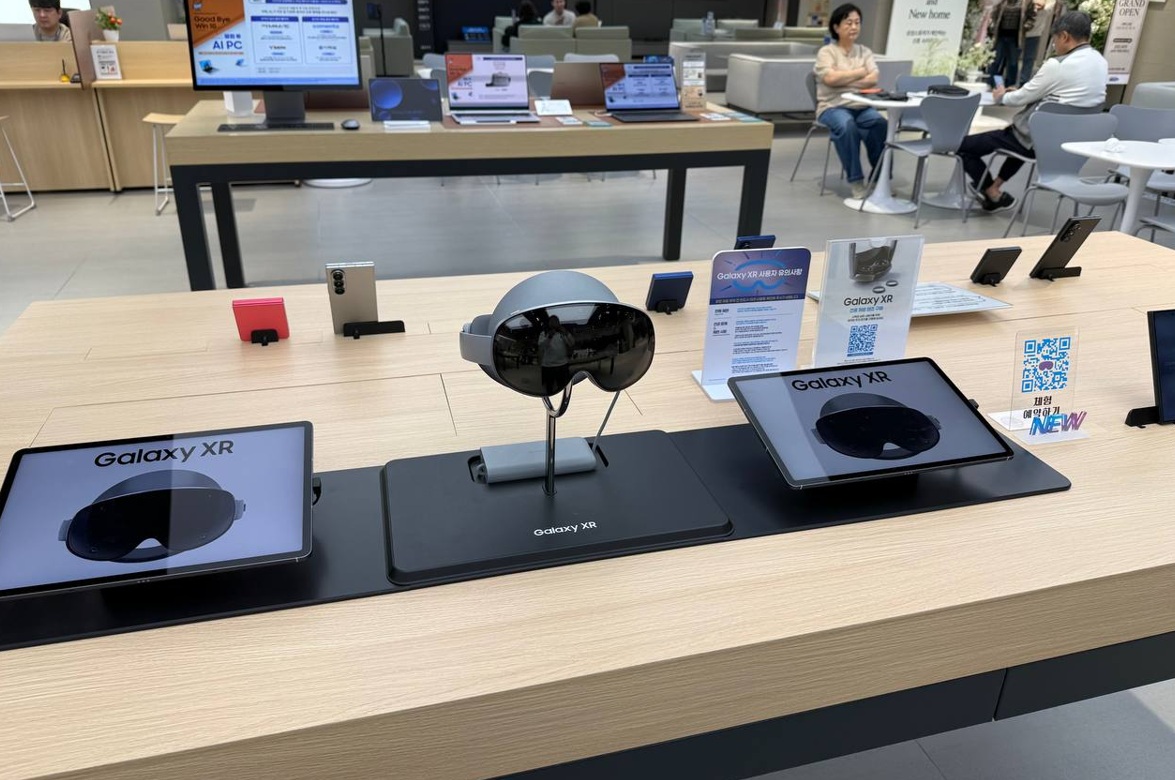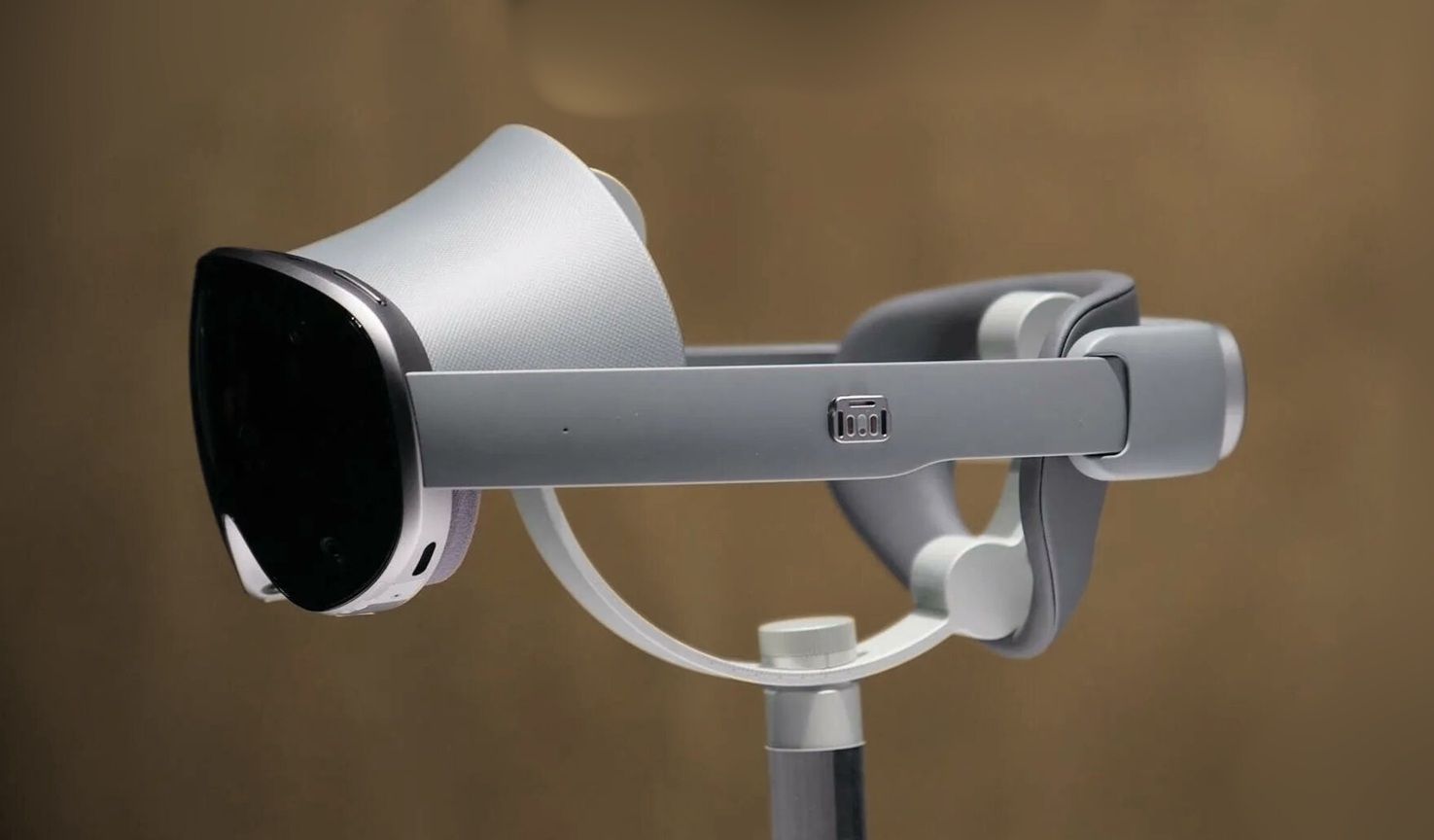Yes, it exceeded the $1k typical landmark but still sits at nearly half the price of the Vision Pro, while concealing a whole lot of innovative tech features—the Samsung Galaxy XR headset debuting at $1,799 is the trendiest topic among VR enthusiasts at the moment. This full-featured mixed-reality (XR) headset positioned aggressively on price and ecosystem openness.
Being the first of its kind – Android XR headsets – expectations are high on the Galaxy XR headset, but at the same time, it’ll be acceptable to find it fall below par for most of those expectations. Besides, this is Samsung’s first virtual reality headset, too. That said, I’ll be writing a succinct review of the Galaxy XR and comparing it to the Apple Vision Pro due to price positioning.
Meet the All-New Samsung Galaxy XR Headset
So, the Galaxy XR launched as an AI-powered, Android-based XR headset, promising to bring the flexibility we enjoy with Android smartphones to VR headsets. The mixed-reality headset was launched at quite a high price, but when you look through the features and tech, you might find it compensating enough and being that it is way cheaper than the Apple Vision Pro, which, since its launch, has stood as a kind of landmark in terms of high-end headset pricing.
Samsung’s Galaxy XR tries to reframe the market by delivering competitive hardware and software at a price point that speaks to consumers, prosumers, and enterprise users. It more like pioneered an untouched niche in the VR space, and we can only expect to see it get better in newer models from either Samsung or other brands that would tap into this niche—Android XR headsets.
Priced at $1,799, it undercuts Apple’s Vision Pro, which starts at $3,499, by roughly half while bringing many of the key experiential building blocks that mainstream VR/AR users and enterprises care about. To wit: high-resolution displays, multimodal tracking (eye, hand, voice), spatial audio, and a new intuitive Android-based XR platform.
What Does the Galaxy XR Bring to the Table?
The flagship headset emphasizes a set of capabilities that are directly comparable to other high-end headsets:
- Core Silicon & AI: Concealed Qualcomm’s flagship Snapdragon XR2+ Gen 2 with a dedicated NPU for on-device AI tasks such as multimodal inference and perceptual tracking.
- Displays & Optics: Ultra-high-resolution panels and optics tuned for content immersion and text clarity.
- Tracking & Input: Eye-, hand-, and voice-tracking with two 6DoF controllers for precise interactions.
- Battery Life: Around 2 to 2.5 hours of mixed-use operation.
- Software: Runs One UI XR, based on the new Android XR stack.
Why Did it Launch at $1,799?
The Galaxy XR is packed with a ton of stuff, and it promises a lot, too. From spatial computing to AI infusion, to ultra-high-quality resolution on both eyes and multimodal tracking, the Samsung Galaxy XR’s $1,799 starting price is justifiable, especially if you compare it to the price of other “high-level” mixed-reality headsets.

Main Features of the Galaxy XR
There’s quite a lot being talked about as regards the newly launched Galaxy XR, but here are the most important ones to know.
Ultra-High-Resolution OLED Panels, 90Hz
The Galaxy XR comes with dual ultra-high-resolution 4K Micro-OLED displays that put out 4,032 PPI each, and offers a wide field of view, 109°(H) and 100°(V), for deep immersion into mixed-reality worlds. Although with a peak 90Hz refresh rate, the panels shoot true-to-life pictures that make movies, events, and literally any visuals become really immersive.
Google Android and Gemini Infusion
At the core of this headset are Google’s architectures. Gemini AI brings a lot of possibilities to the headset, to wit: planning your trips, pairing with Google maps, discovering new places and learning about them in real-time, and much more—Gemini will interpret anything on you see through your headset.
The Galaxy XR runs on Google’s Android XR, bringing Android Play to VR headsets, and this also brings support for a multitude of applications and games. Yes, you can install apps from the Google Play Store. Even so, the XR platform is built on open standards, so it also brings the support of platforms like OpenXR, WebXR, and Unity.
Qualcomm’s Flagship Special-Built Chip for VR
Also, the Galaxy XR packs Qualcomm’s Snapdragon XR2+ Gen 2 chip along with a Hexagon NPU for multimodal AI. This pair makes the Galaxy XR powerful and flexible to handle a wide range of 3rd-party applications.
Design and Build
Design-wise, the Samsung Galaxy XR comes off sleek and lightweight—weighing just 545g; it uses a pretty ergonomic frame that balances on your face; plus, there’s a forehead cushion and an adjustable headband to adjust the fit and comfort, distributing the load evenly across your forehead through the back of your head. The headset also doesn’t rest anywhere on your cheeks.
On the front of the headset are 6DoF cameras, which include 2 world-facing cameras and an LED status indicator. The lenses are 4K micro-OLED each, delivering ultra-high-density pixels. Also, Samsung added a light shield that covers the top of the headset, so that outside light doesn’t reflect in your view through the headset’s lenses. On both sides of the strap are powerful spatial-enabled speakers.
Also on the sides is a soft-touch pad for controls and mode selections, and the battery back connector clip. On the bottom are air vents to provide comfort for long sessions and sitting on the top are two buttons: the volume button and the Quick Panel/AI Assistance button. Overall, the design of the Galaxy XR is practical and intuitive. The two-way speakers deliver rich audios for all playbacks and real-time media views.
What About the Controller?
That’s it, the Galaxy XR doesn’t come with controllers by default; it is designed to be controlled using hand gestures, voice prompts, and other virtual controls, thanks to deep integration with Gemini. However, this headset can pair with a whole lot of third-party controllers, including gaming controllers for gaming.
Is the Galaxy XR a Credible Contender to Apple’s Vision Pro
Well, yes, it is, with a nuance. First, the pricing makes it an enticing choice, since its hardware and chipset are very much in par with those of the Vision Pro. Even so, the design is inarguably alluring, and the headset is light. Apple has always locked its ecosystems, but Samsung adopted an open ecosystem, which brings a ton of flexibility and third-party support.
So yeah, aside from the cost advantage, the Galaxy XR brings literally everything the Vision Pro brings, except for some forgivable lapses like the 90Hz refresh rate compared to the Apple Vision Pro’s 120Hz.
Galaxy XR vs. Apple Vision Pro: A Streamlined Feature Face-Off Table
| Feature | Samsung Galaxy XR | Apple Vision Pro | Value Winner & Why (Score: Galaxy / Vision) |
|---|---|---|---|
| Price | $1,799 (base model) | $3,499 (base model) | Galaxy (10/5): Half the cost makes XR accessible without cutting premium tech. |
| Processor & AI | Snapdragon XR2+ Gen 2 + Hexagon NPU (multimodal AI like Gemini inference) | M2/M5 chip (power-efficient, closed AI via Siri) | Tie (8/8): Galaxy’s open NPU boosts flexibility; Vision’s chip excels in optimized tasks. |
| Displays | Dual 4.3K Micro-OLED (4,032 PPI, 90Hz, 109°H/100°V FOV) | Dual 4K Micro-OLED (~3,660×3,220 PPI, 120Hz, 100° FOV) | Galaxy (9/7): Crisper resolution and wider FOV; Vision’s 120Hz smoother for fast motion. |
| Weight & Comfort | 545g (ergonomic strap, no cheek pressure, forehead cushion) | 600-650g (adjustable bands, heavier feel) | Galaxy (9/6): Lighter build shines for long sessions, as you noted with its sleek design. |
| Battery Life | 2-2.5 hours (external pack, mixed use) | 2-3 hours (external pack, media-focused) | Vision (7/8): Slight edge in endurance, but both need breaks per your real-world note. |
| Tracking & Input | Eye/hand/voice + optional 6DoF controllers (third-party compatible) | Eye/hand/voice (controller-free focus) | Galaxy (9/8): Open controller support adds gaming versatility, despite no default included. |
| Audio | Spatial speakers (rich, two-way) | Premium spatial audio (Zeiss-tuned isolation) | Vision (7/9): Superior immersion, though Galaxy’s audio is solid for media. |
| Software Platform | Android XR + One UI (Google Play, OpenXR/Unity support) | visionOS (polished, locked ecosystem) | Galaxy (10/7): Your “open ecosystem” point wins—Play Store and dev flexibility trump Apple’s walls. |
| AI Integration | Gemini (real-time interpretation, Maps overlays, trip planning) | Siri (contextual, less multimodal) | Galaxy (9/6): On-device AI turns passthrough into smart AR, as you highlighted. |
| Availability & Perks | Samsung/Google Stores (US/Korea first; Explorer Pack worth $1K+) | Worldwide (App Store, spatial media focus) | Galaxy (8/7): Launch perks like free Premium subs add value, with expansion soon. |
Samsung claims the Galaxy XR can last up to 2.5 hours with the battery pack, but the actual duration depends on the real-world user. Right now, you can only buy the XR headset from Samsung’s official store and selected Google Stores in California and New York for a base price of $1,799; any further accessories you’d love to add, like prescription lenses, controllers, or a travel case, would attract additional cost.

